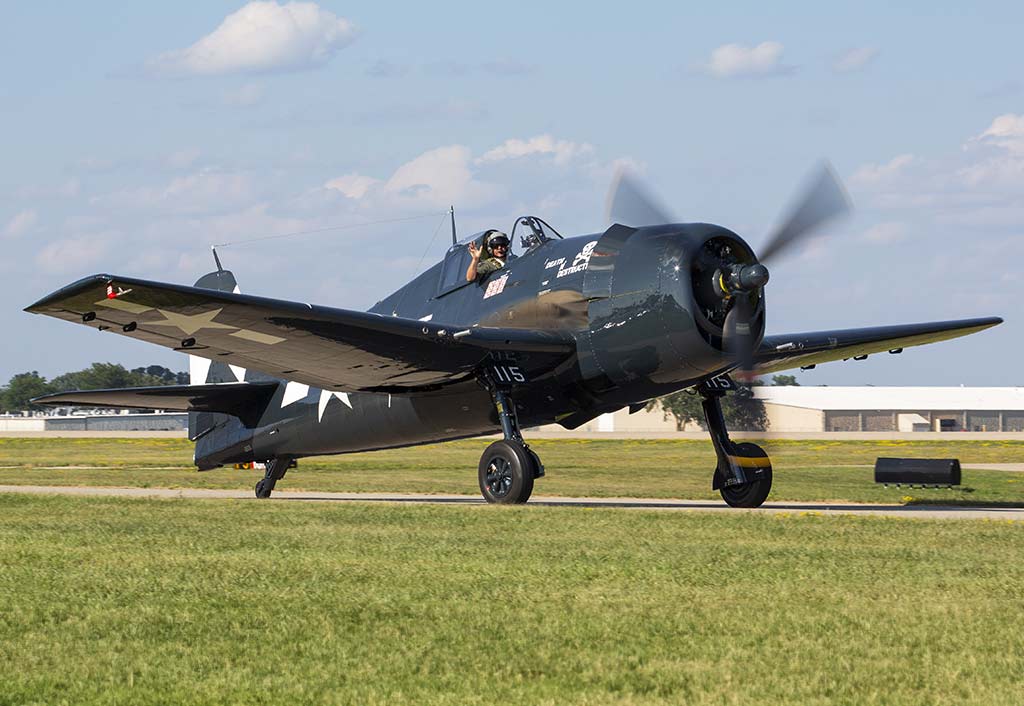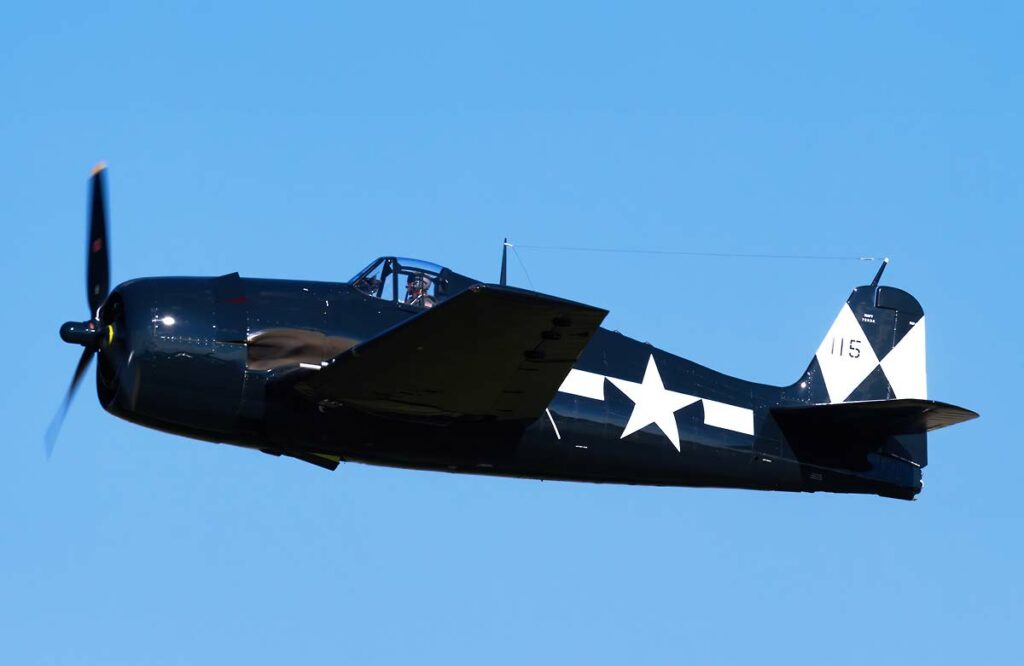The Grumman F6F Hellcat was a warbird, a dominant American WWII carrier-based fighter, excelled in air superiority with robust design and firepower.
The Grumman F6F Hellcat was a cornerstone of American naval aviation during World War II, known for its effectiveness in achieving air superiority. This article aims to explore the development, design, performance, and combat history of the F6F Hellcat, underscoring its role in the Allied victory in the Pacific.

History of the Development of the Grumman F6F Hellcat:
In the context of World War II, the United States Navy sought a superior fighter to counter the Japanese Mitsubishi A6M Zero. Grumman’s F6F Hellcat, developed under the leadership of Leroy Grumman and his team, was designed to meet this challenge.
The development of the Hellcat was driven by lessons learned from earlier naval aircraft and combat experiences against Japanese fighters. The project aimed to create a fighter that was not only superior in performance but also robust and easy to produce. The Hellcat first flew in 1942, entering service at a critical time in the Pacific War.
Design of the Grumman F6F Hellcat:
The F6F Hellcat featured a pragmatic and robust design. It was 10.24 meters (33.7 feet) long with a wingspan of 13.06 meters (42.10 feet). Constructed primarily from aluminum, it featured a simple, rugged structure suitable for carrier operations.
Powered by a Pratt & Whitney R-2800 Double Wasp radial engine, the Hellcat was designed for durability and ease of maintenance. It was armed with six .50 caliber M2 Browning machine guns and had the capacity to carry bombs and rockets, making it versatile in various combat roles.
The design of the Hellcat offered several advantages, including excellent carrier operability, ruggedness, and significant firepower. However, it was heavier and less agile compared to some contemporary fighters.
Performance of the Grumman F6F Hellcat:
The Hellcat’s Pratt & Whitney engine, producing 2,000 horsepower, enabled a top speed of about 610 km/h (380 mph) and a service ceiling of 11,000 meters (35,000 feet). Its range was approximately 1,530 kilometers (950 miles), extendable with drop tanks.
Compared to its primary adversary, the Japanese Zero, the Hellcat was faster, more heavily armed, and more durable. It also outperformed other contemporary fighters in terms of ruggedness and payload capacity.

Military Use and Combat of the Grumman F6F Hellcat:
The Hellcat’s armament and ruggedness made it highly effective in air-to-air combat and ground-attack missions. It played a crucial role in gaining air superiority in the Pacific, participating in major battles like the Philippine Sea and Leyte Gulf.
The Hellcat faced various Japanese aircraft, notably outperforming the Zero. Its success was attributed to its combination of speed, firepower, and pilot protection.
The Hellcat was widely used by the U.S. Navy and Marines and was exported to other Allied nations. Post-WWII, it was phased out with the advent of jet fighters.
The Grumman F6F Hellcat was a key contributor to Allied success in the Pacific during World War II. Its development represented a significant advancement in carrier-based fighter design, combining ruggedness, firepower, and performance. In combat, the Hellcat proved its superiority over Japanese fighters, significantly impacting the course of the war. Its legacy in military aviation is marked by its role in establishing air superiority and paving the way for modern naval aviation tactics and aircraft design.
Back to the Warbirds section.